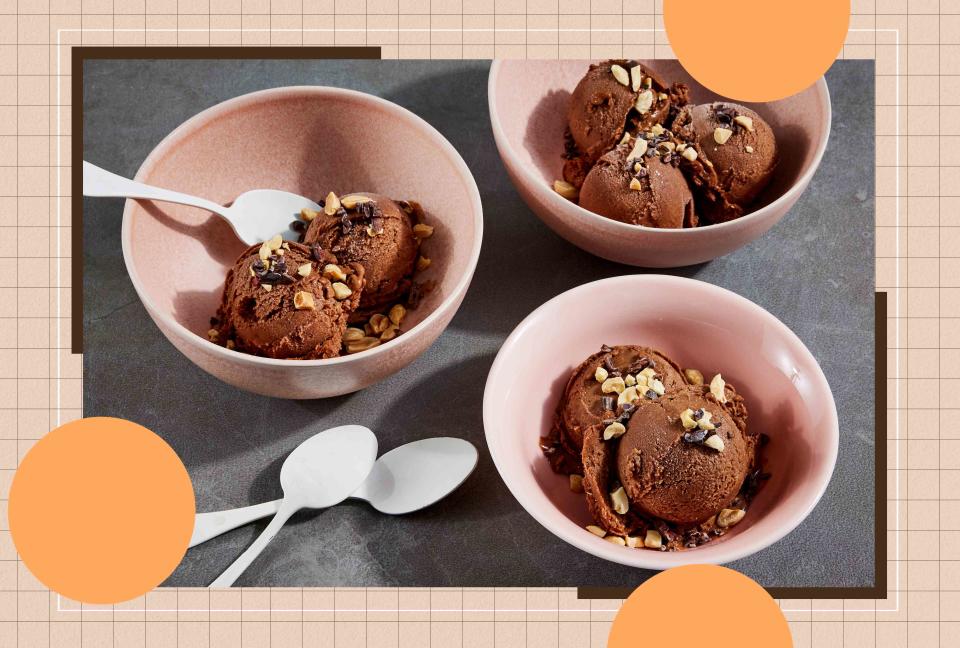5 Sneaky Sources of Caffeine, According to Dietitians
From chocolate to chewing gum, uncover how these sneaky sources may be affecting your sleep and energy levels.

Photographer: Jen Causey, Food Stylist: Ruth Blackburn
Reviewed by Dietitian Jessica Ball, M.S., RD
Are you unknowingly consuming caffeine? Despite your best efforts to limit your intake, this stimulant might be sneaking into your diet from unexpected sources. Dietitians share that caffeine can hide in various foods and drinks which may affect your sleep, energy levels and overall health if consumed in large quantities. Uncover these five surprising sources of caffeine and learn how to manage your intake for optimal well-being.
How Much Caffeine Is Safe?
The safe amount of caffeine can vary depending on individual factors such as age, weight and sensitivity to caffeine. However, for most healthy adults, moderate caffeine consumption is generally considered safe.
The Food and Drug Administration advises that up to 400 milligrams of caffeine per day (about four 8-ounce cups of coffee) is not associated with negative health effects for most people. According to the National Institutes of Health, pregnant individuals should limit their intake to 200 milligrams per day. Additionally, those with certain medical conditions and people who are highly sensitive to caffeine may need to limit their intake further.
5 Sneaky Sources of Caffeine
1. Chocolate
Cocoa beans, the main ingredient in chocolate, naturally contain caffeine. However, the amount of caffeine in chocolate varies depending on the type of chocolate and how it's processed. For example, in 100 grams of dark chocolate (the equivalent of about one 3.5-ounce bar), there are 80 milligrams of caffeine, which is slightly less than the amount of caffeine in one cup of coffee.
Registered dietitian Jaime Bachtell-Shelbert, RD, of Wholly Nourished, says, “Dark chocolate tends to be higher in caffeine than milk chocolate; however, it is much lower than that found in coffee or tea. If you regularly consume chocolate in the evening and are experiencing sleep problems, you may consider switching up your dessert.”
Related: What Happens to Your Body When You Eat Chocolate Every Day
2. Matcha
While you may know matcha has some caffeine, the amount it contains makes it a sneaky source that can add up if you're not aware of it. Matcha is a fine green tea powder, but it contains more caffeine per gram than your typical serving of green tea. Some research suggests it contains 19 to 44 milligrams per gram, which would range from 38 to 176 milligrams for a typical serving. It also has a compound called L-theanine, which research suggests can slow down the release of caffeine. This can result in a more gradual increase in energy levels and a longer-lasting effect compared to coffee, which can lead some people to underestimate the caffeine content.
Registered dietitian Crystal Orozco, RD, of Vida Nutrition Consulting, tells us, “This is a sneaky caffeine source because matcha is typically promoted for its antioxidants and potential cholesterol-lowering effect, but it also has caffeine! Nowadays you can find matcha powders for smoothies, matcha teas and even matcha ice cream.”
3. Kombucha
A sneaky source of caffeine that often goes unnoticed is kombucha, a probiotic-rich fermented drink made from tea, sugar, bacteria and yeast.
Registered dietitian Jessica Wilson, RD, of The Helpful Dietitian, says, “Though the amount of caffeine in kombucha is small, typically containing anywhere from 10 to 15 milligrams per 8-ounce serving, those sensitive to caffeine should be aware that the probiotic drink is tea-based.”
Related: Is Kombucha Good for Weight Loss?
4. Ice Cream
Registered dietitian Caitlin Ogletree, M.S., RD, of Candidly Caitlin, tells us, “You may not think of ice cream as being a source of caffeine, but certain ice cream flavors have caffeine-containing ingredients such as chocolate, matcha or even espresso. Depending on the concentration of those ingredients, the amount of caffeine in a serving of ice cream could rival a cup of coffee.”
While ice cream is not a significant source of caffeine for most people, it's worth being aware of the potential sources, especially if you're sensitive to caffeine or trying to limit your intake.
5. Chewing Gum
Some brands of gum contain added caffeine to provide a stimulant effect. While the amount of caffeine in a single piece of gum is typically small, it can add up if you chew multiple pieces throughout the day. According to research, it can have a quicker onset of action because the caffeine is absorbed through the mouth compared to caffeine in beverages that are absorbed through the digestive system. This can make it easier to consume more caffeine than intended, especially for people who are not aware of the caffeine content in gum.
The Bottom Line
Caffeine can be found in unexpected foods and drinks, impacting sleep and energy levels. Be sure to stay mindful of sources like chocolate, matcha, kombucha, ice cream and even chewing gum, which can contribute to your overall caffeine intake. Moderation is key, with the FDA advising a safe daily intake of up to 400 milligrams of caffeine for most adults and 200 milligrams for pregnant individuals. Awareness of hidden sources can help you manage consumption for better overall health.
Read the original article on Eating Well.

